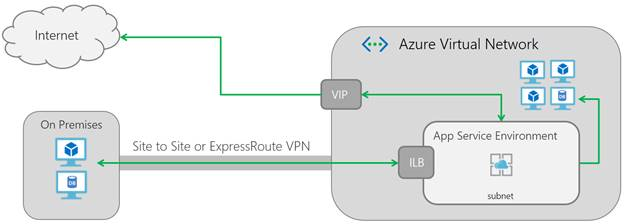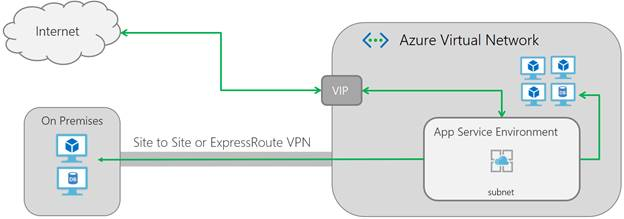
Cloud can be tricky sometimes. Find out what scenarios we've ran into that are worth being mentioned and explained.
Introduction:
In this blog post, we'll unravel the intricacies of utilizing App Service Environments (ASE) to fortify the security of your applications in the expansive realm of Microsoft Azure. Cloud computing offers the promise of effortless deployment for scalable, high-performance, and globally accessible applications—a feat achieved with considerably less effort than traditional hosting platforms.
Understanding App Service Environments:
App Service Environments, commonly known as ASE, empower you to host applications in Azure by providing isolated compute and virtual network resources. This isolation ensures that your applications are shielded from the workloads of other customers, a critical aspect for applications that need to adhere to stringent standards, especially when dealing with classified information.
Azure App Service vs. App Service Environment:
Azure App Service serves as a popular Platform as a Service (PaaS) offering for web app deployment and hosting. With features like load balancing, auto-scaling, and SSL encryption, Azure App Service simplifies the deployment process without the burden of managing underlying infrastructure.
However, Azure App Service operates in a multi-tenant environment, where many customers share the same infrastructure. While Microsoft ensures separation between customers, certain elements of the service are shared. This shared infrastructure model is cost-effective but may pose challenges for applications requiring enhanced security and isolation.
The Need for Isolation:
When security demands dictate the avoidance of shared infrastructure, as is often the case with processing highly classified information, App Service Environments come into play. These environments offer a more isolated approach, allowing you to achieve enhanced security without compromising the developer experience or sacrificing essential features.
Key Isolation Mechanisms in App Service Environment:
1. Dedicated Hosts:
By leveraging Dedicated Hosts, your app runs on underlying hypervisors exclusive to your use, eliminating the sharing of resources with other customers.
2. Virtual Network Deployment:
App Service Environments can be deployed within your dedicated virtual network, providing greater control over network security, ingress, and egress for your applications.
Types of App Service Environments:
• Internal ASE:
For applications intended for internal access only, an Internal ASE ensures access is restricted solely to the virtual network.


Deployment Process:
Configuring an App Service Environment, especially with the streamlined version 3, is a straightforward process. The deployment of web or function apps within an ASE follows a process similar to that of regular App Service apps. The key difference lies in selecting an Isolated plan within the App Service Plan, signifying the isolation of your apps from others, along with access to enhanced scalability.
Conclusion:
As organizations navigate the complexities of cloud hosting, App Service Environments emerge as a beacon for those seeking heightened security, isolation, and performance. With ASE, the dance between application deployment and security becomes a harmonious symphony, allowing businesses to meet stringent requirements without sacrificing the agility and ease of use synonymous with cloud computing.